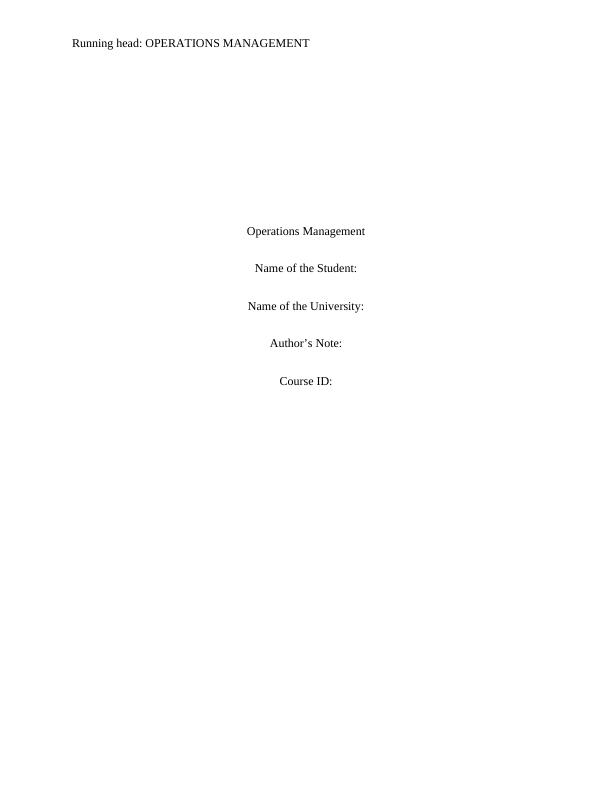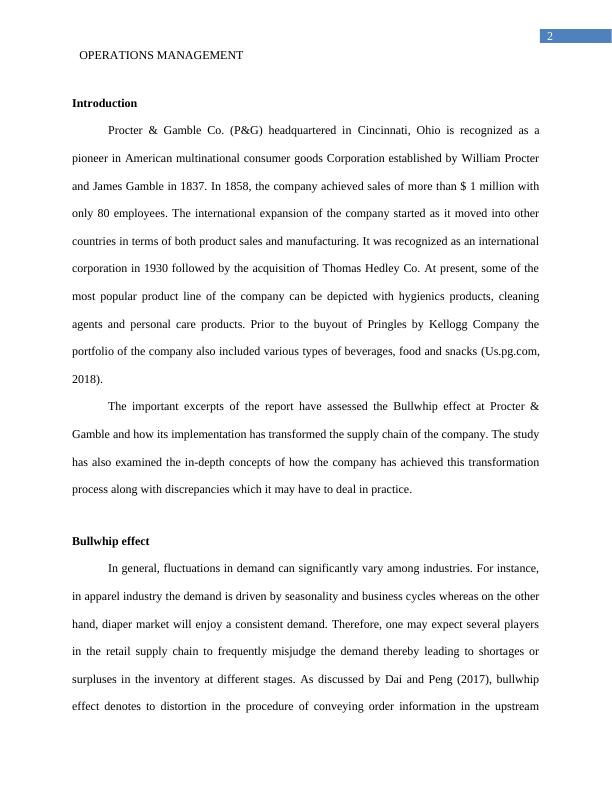Bullwhip Effect and its Transformation in Supply Chain: A Case Study of Procter & Gamble
8 Pages1516 Words292 Views
Added on 2023-06-05
About This Document
This report examines the Bullwhip effect at Procter & Gamble and how its implementation has transformed the supply chain of the company. It also discusses the discrepancies with theoretical concepts.
Bullwhip Effect and its Transformation in Supply Chain: A Case Study of Procter & Gamble
Added on 2023-06-05
ShareRelated Documents
End of preview
Want to access all the pages? Upload your documents or become a member.
Global Operations and Logistics
|13
|4237
|62
Sustainable Supply Chains for Procter and Gamble Company PDF
|13
|3625
|142
Bullwhip Effect and Supply Chain Risk Management
|7
|1564
|396
Market Structure of Procter and Gamble
|13
|3255
|32
Financial Analysis and Budgeting for FMCG Supply Chain
|10
|2083
|257
Management and Operations
|14
|598
|69



